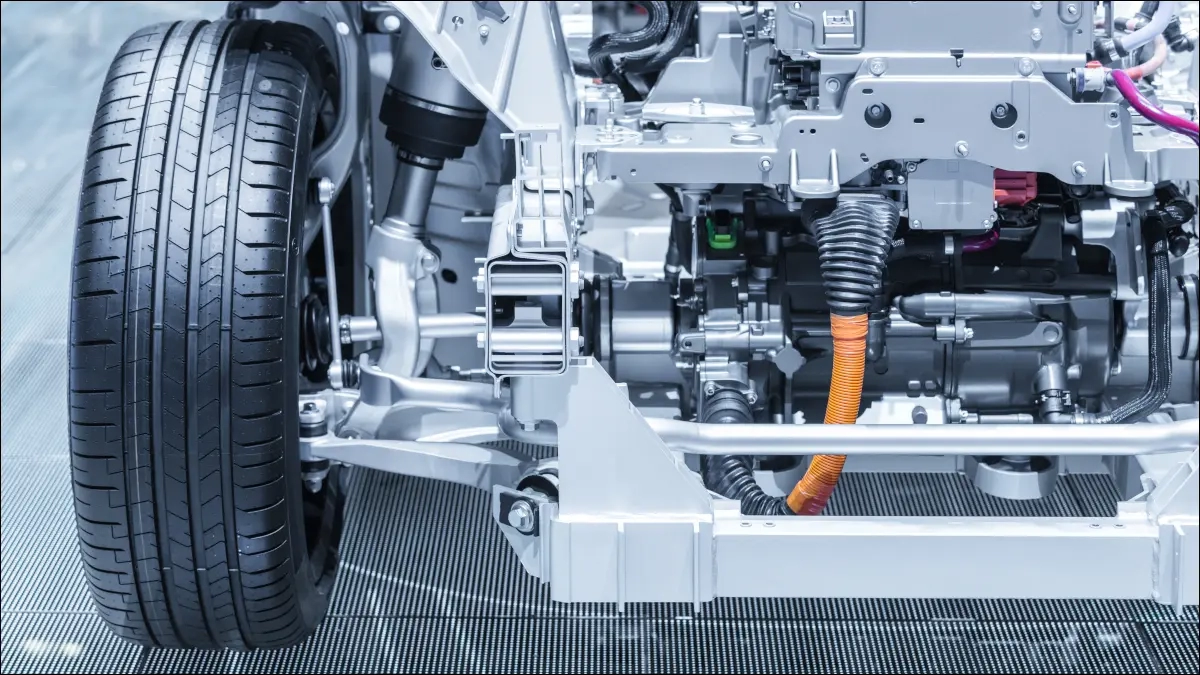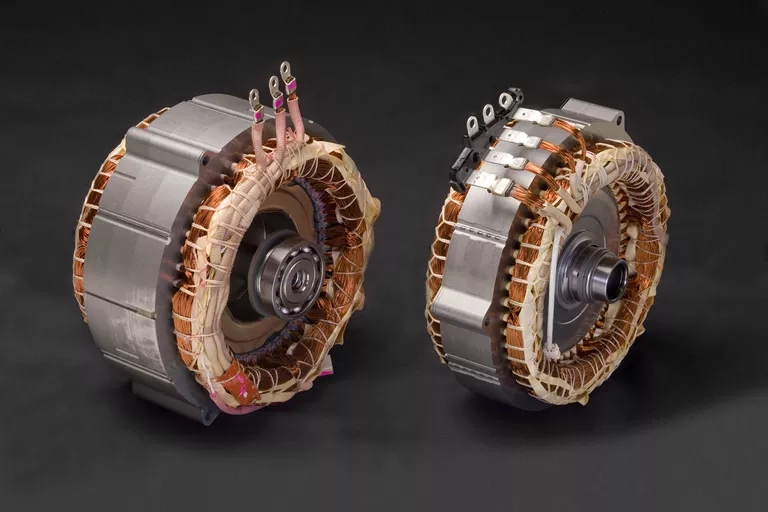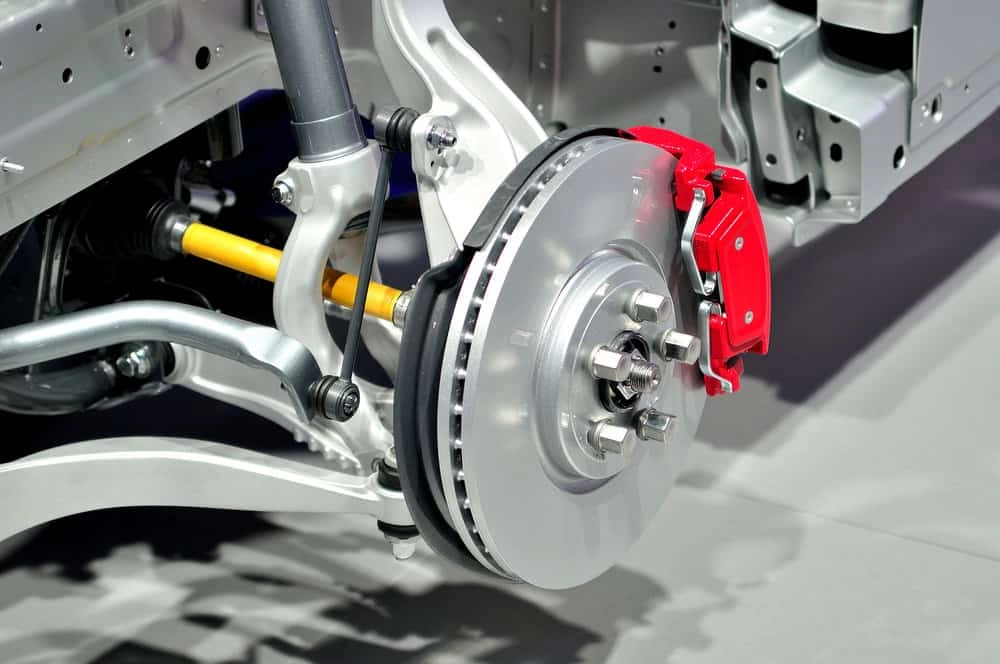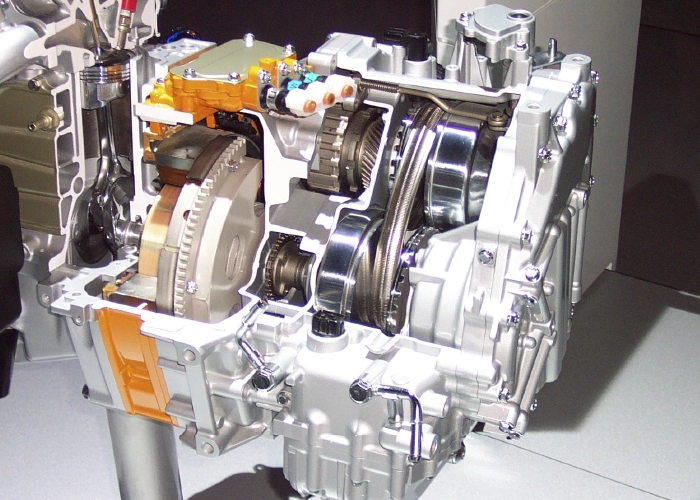Mercedes Regenerative Braking - How It Works
Regenerative braking is a sort of energy recovery that reduces the speed of a moving item or vehicle by transforming its kinetic energy into a form that may either be used right away or saved for later use. Through this system, heat that would otherwise be wasted on the brake discs is recovered by the electric traction motor.
In contrast to traditional braking methods, this technique. Due to friction in the brakes or with rheostatic brakes, where the energy is recovered by employing electric motors as generators, the excess kinetic energy in those systems is instantly lost as heat in resistors.
Regeneration may considerably increase the life of the braking system since the mechanical components won't wear out as rapidly, in addition to enhancing the vehicle's overall efficiency.
The most popular kind of regenerative braking uses an electric motor that also serves as a generator of electricity. The produced electricity in electric trains is fed back into the traction power supply.
Energy is kept chemically in a battery, electrically in a bank of capacitors, or mechanically in a revolving flywheel in battery-electric and hybrid electric cars. Hydraulic motors are used in hydraulic hybrid cars to store energy as compressed air.
Similar to the battery- and hybrid-electric cars, the electrical energy produced by the motor in a hydrogen fuel cell vehicle is chemically stored in a battery.
The Table of Content
- Regenerative Braking: What Is It?
- Regenerative Braking: How Does It Function?
- What Does Mercedes' Recuperation Braking Do?
- Which Mercedes Models are Equipped with Recuperation Braking?
- What Is the Added Charge from Regenerative Braking?
- What are the Advantages of Regenerative Braking?
- What are the Disadvantages of Regenerative Braking?
- What Sensation Does Regenerative Braking Produce?
- How Do PlugIn Hybrid and Electric Mercedes Automobiles Use Regenerative Braking?
- Calculations of Regenerative Braking Efficiency and How They are Done
- The Conclusion
1. Regenerative Braking: What Is It?
Most hybrid and fully electric cars use regenerative braking as a braking technique. To charge the high-voltage battery in the car, it transforms the kinetic energy from braking into electrical power. Regenerative braking helps conventional braking by slowing the vehicle down as well.

Image source: https://www.jdpower.com/cars/shopping-guides/what-is-regenerative-braking
Friction between the brake pads and rotors causes an automobile to slow down in a traditional braking system. However, this approach is quite ineffective at saving energy. When you use the brakes, almost all of the kinetic energy that is pushing your automobile forward is converted to heat. That's a lot of energy lost!
By recovering up to 70% of the kinetic energy that would otherwise be wasted while braking, regenerative braking provides a solution to this issue. Depending on your car type and driving style, you can recover a certain amount of energy.
2. Regenerative Braking: How Does It Function?
Knowing how a conventional braking system function is necessary to comprehend how regenerative braking functions. The brake discs and brake pads come into contact with each other when you press the brake pedal of a car. Friction then generates kinetic energy, which is released into the environment as heat.
With the help of regenerative braking, kinetic energy that would have otherwise been converted to heat is recovered and turned into electricity. In this method, when moving forward or cruising, the engine propels the wheels, and when slowing down, the wheels propel the motor.
The engine can function as a generator by opposing the rotation of the wheels and generating power to refuel the vehicle's battery thanks to this two-way energy flow.
Regeneration can happen under two circumstances:
- When a motorist steps on the brakes.
- The moment the driver lets off the gas pedal, at which point the car coasts.
The mechanism generates power in both scenarios to replenish the battery. This regenerative effect is visible to drivers on the charge gauge of the car, which depicts it as energy moving from the wheels to the battery.
The system's electrical output is proportional to how much braking force it applies. In other words, the electrical current increases as the braking force do. The system's ability to capture energy ultimately depends on the vehicle's speed and how long the brakes are applied.
When braking, the technology automatically divides the braking force between the traditional brake system and energy regeneration. In this manner, the technology simultaneously slows the car down and recharges the battery to increase the car's economy and electric driving range.

Image source: https://www.howtogeek.com/788914/what-is-regenerative-braking/
3. What Does Mercedes' Recuperation Braking Do?
To assist you in effectively managing your vehicle's range, Mercedes automobiles employ a procedure called recuperation that recovers energy when the vehicle is decelerating. The shifting paddles have five distinct settings(Recuperation modes) that you may choose from. Your car will recover more energy and decelerate more quickly the larger the recuperation:
- D- - To maximize the range of your Vito Tourer, choose this setting. It recovers the greatest energy when decelerating the fastest. Due to the extreme deceleration, your brake lights will turn on automatically.
- D- Your car will slow down and regain some energy a little more slowly in D- than in D— when you let off the gas. In most cases, this setting will turn on your brake lights.
- D This mode is useful for moving at a somewhat steady speed in more frantic traffic, and each time you restart the engine, the car switches back to D. It seems like a steady slowdown, similar to dropping a diesel car into a lower gear. Although not as much as D-, some energy is recovered. Typically, this setting does not immediately activate the brake lights.
- D+ This is a sailing mode, so your car will slow down naturally, much like a diesel car coasting to a halt. The battery does not regain any energy. It helps you "surf" without any drag from the electric engine on lengthy downhill stretches of major roadways.
- D Auto The clever mode D Auto is engaged with a long pull of either paddle shifter. Instead of you having to do it, it employs a radar sensor and navigation data to automatically adapt the recuperation level to the traffic scenario.
4. Which Mercedes Models are Equipped with Recuperation Braking?
The all-electric drive provides the opportunity to use recuperation to change the direction of energy conversion and so recover energy.
While the electric motor receives electrical energy during acceleration to generate mechanical energy, it is mechanically propelled by the vehicle's kinetic energy during speed reduction and deceleration to recover electrical energy.
This may then be utilized to transmit power once again by being fed back into the vehicle's high-voltage battery. There are five distinct recovery modes available for the Mercedes-Benz B Class, EQE, EQC, EQS, and EQA.
The amount of braking energy that is supplied back may be adjusted using the shift paddles on the steering wheel, from "D+" (gliding) to "D- -." (strong recuperation). Recuperation level D Auto has ECO Assist activated, which controls the strength of the recovery according to the current driving conditions.

Image source: https://www.forbes.com/wheels/advice/regenerative-braking/
5. What Is the Added Charge from Regenerative Braking?
Most hybrid and fully electric cars use regenerative braking as a braking technique. To charge the high-voltage battery in the car, it transforms the kinetic energy from braking into electrical power. Regenerative braking helps conventional braking by slowing the vehicle down as well.
Friction between the brake pads and rotors causes an automobile to slow down in a traditional braking system. However, this approach is quite ineffective at saving energy. When you use the brakes, almost all of the kinetic energy that is pushing your automobile forward is converted to heat. That's a lot of energy lost!
By recovering up to 70% of the kinetic energy that would otherwise be wasted while braking, regenerative braking provides a solution to this issue. Depending on your car type and driving style, you can recover a certain amount of energy.
6. What are the Advantages of Regenerative Braking?
As you might expect, increasing the amount of braking energy that is captured and put to use improves the efficiency of your car. Additionally, it results in less deterioration of your brakes. The following are the principal benefits of regenerative braking:
6.1 Rotors & Pads for Brakes Could Last Longer
Even though regenerative braking offers significant stopping power on its own, EVs and hybrids also have standard hydraulic brakes as standard equipment. The brake pads and rotors are utilized considerably less often since regenerative braking does much of the work when slowing the car.
They often require fewer repairs as a consequence, which may save drivers money on upkeep.
Despite this, it's still vital to get your brakes checked frequently, and the manufacturer's recommended maintenance program may include regular inspections. Simply bring your electric or hybrid car to Tires Plus for an efficient examination.
6.2 EVs Possibilities for Extended Range
Your EV's range can be increased by recapturing braking energy and delivering it directly back to the battery pack. Regenerative braking has the potential to extend the range of electric vehicles by hundreds of miles annually, according to estimates. As a result, you will spend less time paying and more time getting where you need to go.

Image source: https://www.treehugger.com/how-does-regenerative-braking-work-85465
Every mile matters when charging facilities are still in short supply in many locations. Additionally, by using the grid less frequently, you contribute to a reduction in the emissions produced by electricity producers that use coal and gas as fuel.
6.3 Better Hybrid Fuel Efficiency
Although hybrid vehicles still house internal combustion engines, they are built to make the most of their electric powertrain. Regenerative braking assists in keeping the battery pack charged so that drivers don't need to use their engines as frequently, hence lowering their fuel costs.
7. What are the Disadvantages of Regenerative Braking?
Regenerative braking has more advantages than disadvantages, although no technology is faultless. Here are several situations where regenerative braking is inadequate:
7.1 At Lower Speeds, It Might Be Less Effective
Your car has less kinetic energy and needs less braking effort while traveling at a slower speed. As a result, the battery pack receives less energy from the regenerative braking system and receives less charge. Additionally, some automakers believe that under some circumstances, coasting may be preferable to regenerative braking.
7.2 The Brake Pedal Could Feel Peculiar
When driving, one thing you want to be certain of is that your brake pedal is functional. While the brake pedals on hybrid and electric vehicles do indeed operate, you might notice a difference in how they feel.
You can suffer brief unresponsiveness or pedal compression that isn't as smooth as you would want. You might need to modulate the pedal differently in various circumstances.
The good news is that it's not as much of a problem as it formerly was with the way the brake pedal feels now. The brake pedals on more recent hybrid and electric vehicle models are more responsive and feel identical to any pair of standard brakes.
7.3 Less Possible Stopping Power
While most braking scenarios involve coming to a slow stop, regenerative braking works just well in those circumstances. However, it could not deliver the same degree of stopping power as conventional brakes. As a result, drivers of hybrid and electric vehicles may need to apply more force to the brakes to attain the same efficacy.

Image source: https://brakeexperts.com/why-is-regenerative-braking-limited/
However, with more recent regenerative braking systems, this issue is also becoming better. You might not even notice a change in stopping power in more contemporary automobile models.
8. What Sensation Does Regenerative Braking Produce?
There are various vehicles available with regenerative braking, and each one operates somewhat differently. In reality, you may customize how an electric car feels to your preferences in the majority of them.
You may set it to the highest level if you want to recover as much wasted energy as you can, or you can turn it off if you don't like the way the car brakes. The brake lights will typically illuminate if the vehicle is slowing down suddenly, even if the brake pedal is not even depressed.
Even automated cruise control systems in certain vehicles utilize brake regeneration. Sensors track the vehicle in front, and the brake regen is applied to match that vehicle's speed on the road.
In many EVs, when you release the pedal, it seems like your foot is still firmly on the brake. To accelerate and decelerate, you must modulate your right foot rather than switching it between the brake and accelerator pedals. This is known as one-pedal driving.
9. How Do PlugIn Hybrid and Electric Mercedes Automobiles Use Regenerative Braking?
Regenerative braking is a topic that comes up frequently when discussing electric and plug-in hybrid vehicles, but what exactly is it and how does it function?
In plug-in hybrid electric vehicles (PHEVs), an internal combustion engine is powered by another fuel, such as gasoline, while an electric motor is powered by batteries (ICE).
The ICE, a power outlet, a charging device, or regenerative braking can all be used to charge PHEV batteries. The automobile normally uses ICE power until the battery is nearly empty, at which point it switches back to electric power.
Regenerative braking, as the name indicates, harnesses the car's forward motion when you let up on the accelerator to recharge the onboard batteries.
To recharge the car's batteries for subsequent usage, it converts the momentum back into electrical energy. Additionally, regenerative braking stops when you stop going, much like an old bicycle with wheel-driven dynamo lights.

Image source: https://www.import-car.com/regenerative-braking-service/
10. Calculations of Regenerative Braking Efficiency and How They are Done
The following are steps in a process for figuring out how much regenerative braking an ecologically friendly car should use:
- Figuring out whether regenerative braking is present.
- Figuring out whether a high voltage component, such as a battery or a drive motor, limits charging when the environmentally friendly car is using its regenerative braking system.
- Calculating the base speed (base rpm) of the driving motor for an environmentally friendly car during regenerative braking, based on the charging limit state, and dividing the steady torque and steady power areas based on the calculated base speed.
- Based on the split steady torque area or steady torque area, identifying whether an operating mode of the driving motor is a steady power mode, a steady torque mode, or a conversion mode, and calculating the amount of regenerative braking based on the determined result.
11. The Conclusion
To attain driving efficiency, hybrid and electric cars use battery technology, aerodynamics, and other mechanical innovations.
Regenerative braking is one such characteristic used by these energy-efficient automobiles. Regenerative braking utilizes energy that would otherwise be lost when stopping a vehicle to assist replenish the battery.
Regenerative braking is a key factor in the overall efficiency equation for hybrid and electric vehicles, which is achieved through the integration of many technologies.
Due to their low wear and tear characteristics, regenerative braking systems also increase electric range while reducing energy waste and increasing brake life. The advantages of this technology are clear, and they contribute to the growing market attraction of green vehicles.